Understanding Recent Fertility Trends in the UK and Improving Methodologies for Fertility Forecasting
The project ‘Understanding Recent Fertility Trends in the UK and Improving Methodologies for Fertility Forecasting’ will examine the significant fluctuations in fertility levels in the UK in the last two decades, will investigate their causes, and will develop improved methodologies for fertility forecasting. The last two decades have witnessed dramatic changes in fertility levels, which were not predicted by demographers or government statisticians: Fertility significantly increased in the first decade of the 21st century, whereas it has declined thereafter. These changes when translated into numbers of births, have had important implications, for example in the provision of health services, childcare, and school places. The project aims, first, to produce detailed measures of fertility changes in recent years in the UK. Second, it will decompose the overall changes into those attributable to compositional changes in the UK population, e.g. by country of birth, migrant population, education, and those which are attributable to behavioural changes over time, i.e. women have fewer or more children. Finally, these insights will be used to develop new methodologies for more accurate forecasting of fertility applying them to the UK and its constituent countries. The developed methodologies could be applied to project fertility trends in other industrialised countries.












